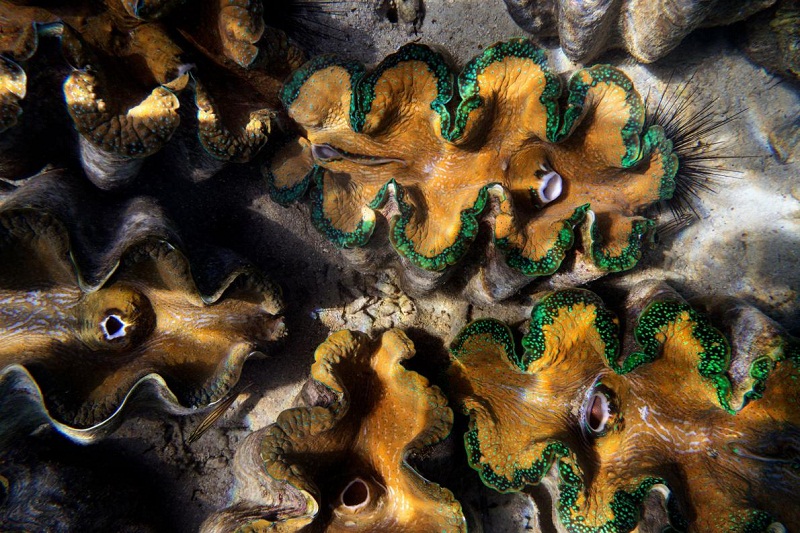Critical Reefs Destroyed in Poachers’ Quest for World’s Biggest Clams

PUERTO PRINCESA, PHILIPPINES Biologist Ed Gomez was in his office at the University of the Philippines Marine Science Institute about 25 years ago when the phone rang. The woman on the line told him she worked as a broker and had a client who wanted to buy some of the young giant clams his team was culturing. “She said, ‘I have a buyer who will purchase your clams,’” Gomez recalls. “I asked her, ‘Are these for local sale or intended for export?’” Both, she said. “That’s when I told her, ‘I’m sorry to tell you the Bureau of Fisheries will not allow the export of giant clams.’” Months before, Gomez and his team had applied for—and been denied—export permits for giant clams. His original plan had been to figure out how to breed the clams in captivity, so Filipino fishermen could supplement their income by growing them themselves and selling them abroad. “Oh don’t worry about it,’” Gomez remembers her saying. “‘Just release the clams, and [I’ll] take care of it.” Gomez again declined and hung up the phone. He thought nothing more of it. A few weeks after that call, the institute’s clams, which lived in sea pens offshore, started disappearing by the hundreds. It went on for weeks. “They were stolen,” Gomez says. The team notified the police, but the culprits were never found. At the time, the colorful species of giant clams were in demand for the aquarium trade. Gomez’s lab was the only one of two institutions raising the slow-growing clams—whose soft tissues glow in hues from seafoam green to deep blue and bright purple—and he suspects that his babies were ending up in people’s aquariums. He hatched a plan. The lab would switch from raising the colorful species to growing the biggest of the 12 species of giant clams, Tridacna gigas.They are plain-looking as juveniles and not so appealing to collectors. Breeding them would focus the team’s purpose: to help restock this nearly extinct species in the Philippines and South China Sea. Gigas clams can grow up to nearly four feet (1.2 meters) long and weigh 500 pounds (227 kilograms), and they play a significant part in keeping the South China Sea’s shallow-water reef habitats alive and well. They provide a home for seaweeds, sea sponges, snails, and slugs, and protection for young fish. They also fill a valuable role as filter feeders, cleaning the water of pollutants as they ingest algae or plankton. Giant clams have taken a hit in recent decades, and they’re considered vulnerable to extinction. During the 1970s much of the Asia-Pacific region was picked clean of giant clams for their meat, which was prized in China as a supposed aphrodisiac. Then came the aquarium trade in the 1980s. Now there’s a new problem: Giant clams are in vogue in China for carvings, jewelry, and other ornaments—as status symbols for the wealthy and as protective charms in Chinese Buddhism.
Read More: http://news.nationalgeographic.com/2016/08/wildlife-giant-clam-poaching-south-china-sea-destruction/

